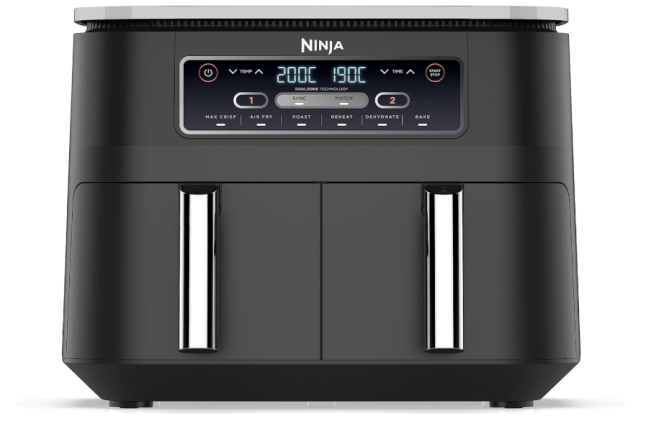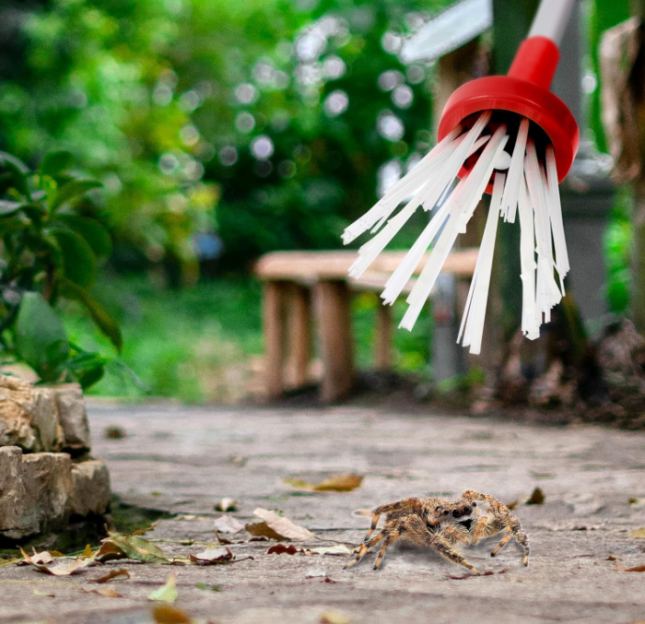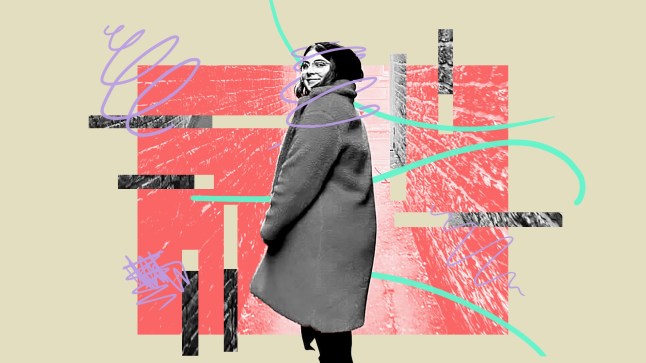
TikTok told me that my ADHD was a superpower. And I believed it – but only for about five minutes.
Scrolling on the app after I was first diagnosed, I was desperate to find ‘my people’ – the ones who would make me feel seen. Less like a jigsaw puzzle that simply didn’t fit, and more like a person who simply thought differently.
My feed was suddenly inundated with people who were just like me: chaotic, creative, chatty, and crucially, late for everything.
But then, on countless podcasts and social media posts, I saw other neurodivergent people encouraging their fellow ADHDers to view their condition not as something to hold them back, but as a ‘superpower.’
For a fleeting moment, I wanted to believe it. Understanding my true self and unlocking the answers to questions I’d chased after for so long was liberating, but afterwards came a heavy realisation: I’d spent more than 20 years not understanding my own brain. I mourned that loss of time.
The problem is that that version of ADHD doesn’t exist for me. I wanted to believe that I could sugarcoat this diagnosis – and that reframing it might somehow make it easier. I could let the subsequent grief destroy me, or I could take another spin on it.
Pretty quickly, though, I realised that it simply wasn’t going to work for me.
Looking at ADHD like some kind of Marvel origin story is toxic positivity at its finest, trying to force us to perennially see the ‘good’ in the condition while ignoring the difficulties that come with it.
It plays into the idea that, for people living with ADHD to be palatable, we exclusively need to play into our strengths – and ignore how debilitating living in a world designed by and for neurotypical people is.

That’s why I believe that now is the time for us to stop perpetuating this rhetoric – because not only does it misrepresent ADHD as something that can and should predominantly be used to our advantage, but it also suggests that we can almost ‘girl boss’ our way out of the ableism that still oppresses neurodivergent people every single day.
Trying to lean on my ‘strengths’ all the time is exhausting – and this mentality doesn’t solve the fact that this world wasn’t built for a brain like mine.
For as long as I can remember, I have perpetually run late (which was so common that my friends had developed a term for it: ‘Ellie time’); I’m so clumsy that I trip over my own feet; I leave virtually every task until the last possible minute, and I’ve always struggled with my mental health.
I vividly recall telling my mum at 15 that if a doctor were to look at my brain, the scan would light up in bright, colourful hues. I was convinced that I was hard-wired to process information differently and always felt that I experienced emotions on a deeper spectrum than the average person.
Doctors thought I had anxiety and depression, and I was prescribed SSRIs, beta blockers, and recommended meditation and talking therapy. Nothing worked, because none of it addressed what was actually going on.

Keep up with the conversations shaping Britain
Hi, I’m Ross McCafferty, Metro’s acting first-person and opinion editor.
Here at Metro, we’re passionate about giving a platform to unheard voices. You can read more real-life stories like this one with our News Updates newsletter.

From championing marginalised communities to tackling taboo topics, we help people from all walks of life tell stories that inspire, educate and spark change.
Sign up now and get the top headlines served straight to your inbox, every day.
Finally, in November 2021, aged 23 – after an assessment with a psychiatrist – I got a diagnosis of combined ADHD. There are three types of ADHD: inattentive, hyperactive, and combined, which means that I display elements of both hyperactivity and inattentiveness.
I have trouble focusing, but my mind can also be incredibly frenzied. I can be pretty disorganised at the best of times, but there’s equally a lot of energy passing through me: my leg is always jittering up and down, and I’m often fidgeting.
Hearing those words come out of his mouth was a complete relief, as though years of struggle had been validated in one fell swoop. It taught me that I wasn’t broken – my brain was just a little bit different. For the first time, everything made sense.
Don’t get me wrong: I completely see why someone – neurodivergent or otherwise – would try to focus on the many positives that living with ADHD can bring.
It’s not a one-size-fits-all experience, but I personally know that I’m constantly overflowing with ideas, I can jump into action in a crisis, I’m highly creative, and I’m incredibly passionate. So much so that I can end up hyperfixated on my special interests for hours.
But when I’m crying on my bedroom floor because my room’s a mess and I physically can’t tidy it up; I’ve forgotten to pay a bill, or my mind has been racing so much that sleep has been replaced by insomnia, these positives don’t always come to me. And in these low moments, I certainly don’t feel as though I have a superpower.
All I can feel is frustration. It’s dark, and it can be lonely. These aren’t moments that trend on TikTok.
ADHD Awareness Month 2025
Taking place every October, the theme for this year’s ADHD Awareness Month is ‘The Many Faces of ADHD.’
But it’s not just neurodivergent people who should care about ADHD: there’s value in those without the condition understanding it, too. No amount of awareness is too great, and one of the best things neurotypical people can do for us is give us allyship.
With that in mind, Metro Lifestyle will be embarking on a weekly series of ADHD content throughout October that aims to demystify what it truly means to live with this vastly misunderstood condition.
Our brains are a little bit different, and that’s okay. Now, let us tell you all about it.
Calling ADHD a superpower might sound positive, but it glosses over the reality that living with it can be genuinely debilitating. It suggests we can turn our struggles into assets if we just try hard enough.
When we think about superheroes and special ‘powers,’ we might conjure up images of benevolent saviours in capes. In one way or another, they’re usually there to save the world.
I don’t see how I’m supposed to fit that trope. The reality is that ADHD still holds so much stigma and misunderstanding – and likening it to a ‘superpower’ completely downplays the reality that the estimated 3 million Brits living with it face every single day.
In 2024, one study from pharmaceutical company Takeda found that 96% of people with ADHD said they were hesitant to tell their workplace about their diagnosis.
Almost three-quarters attributed this towards fear of judgment, while around half worried that it could be used against them.
Against that backdrop, we’re perpetually inundated with misleading headlines about our community: that ADHD is being ‘overdiagnosed’ now. In 2023, the BBC went as far as to send a reporter out to private ADHD clinics to see if he could obtain a diagnosis, despite not having the condition.
In the aftermath, charity ADHD UK polled 2,203 people living with the condition and found that 90% believed that ADHD stigma increased in the aftermath of its airing, while 88% were concerned that it wasn’t fair in its representation.
And so, this ADHD Awareness Month, the best thing that we as a community can do for ourselves is to leave behind this ‘superhero’ narrative. I wouldn’t change my diagnosis for the world; understanding who I am and how my brain works has forever changed my life. But ADHD doesn’t need a motivational spin or a cape; it just needs understanding.
To suggest that it’s not a completely disabling condition that so many continue to misjudge is, for me, a complete falsehood. Society owes us more than that.
Do you have a story to share?
Get in touch by emailing MetroLifestyleTeam@Metro.co.uk.
6 Oct, 2025 | Admin | No Comments
I was a fit and healthy 20-year-old — then I had both my legs amputated
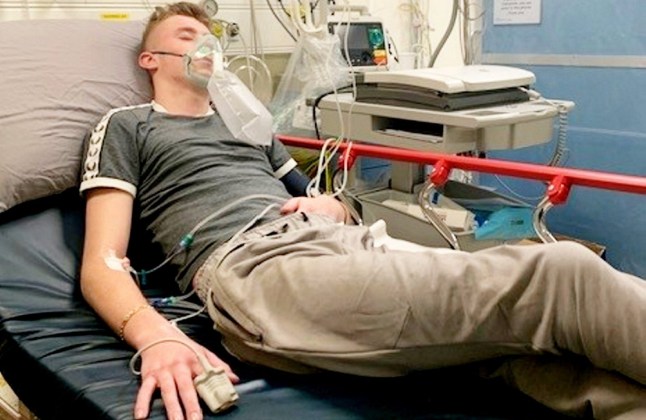

A ‘fit and healthy’ young man was forced to have both of his legs amputated just days before his 21st birthday — after his flu-like symptoms turned out to be sepsis.
Levi Dewy was left in an induced coma with just a 30% chance of survival after being struck down with the life-threatening condition.
In December 2022, the active 20-year-old, who loved playing football, first fell ill with flu-like symptoms and began taking over-the-counter medications.
However, mum Lara was concerned that his ‘breathing wasn’t right’, so took him to hospital after his condition failed to improve and ‘mother’s intuition’ raised red flags.
‘He was dosed up on cold and flu tablets but he had a high temperature that wasn’t cooling and he was really drowsy, with no appetite,’ she says. ‘He just wasn’t my Levi.’
Her suspicions were right, and former JCB welder Levi went into septic shock and suffered multiple organ failure at Royal Derby Hospital, where medics found he was suffering from pneumococcal pneumonia and sepsis.
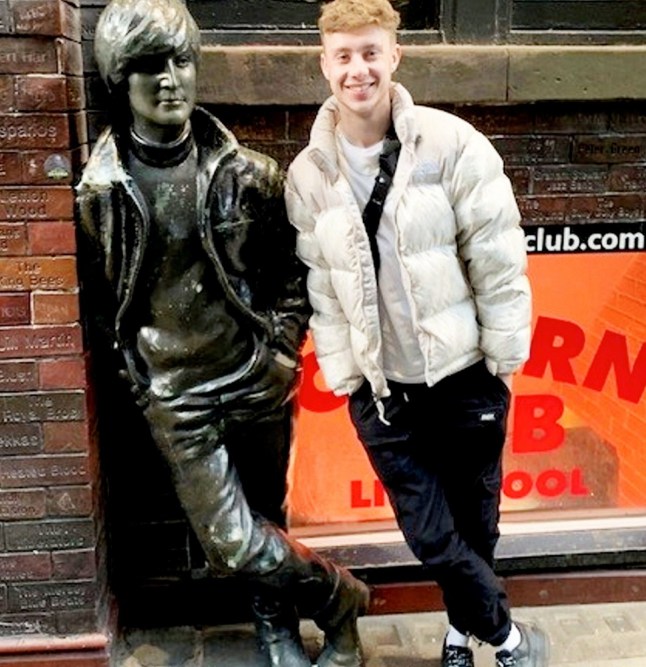
After being transferred to Glenfield Hospital in Leicester, he was put into the induced coma and given Extracorporeal Membrane Oxygenation treatment, where his blood was pumped into an artificial lung to be oxygenated and returned to his body.
But despite appearing to improve initially, his condition continued to deteriorate, and Levi’s mum and dad, Neil, were given a terrifying prognosis.
‘It all happened so quickly,’ Lara recalls. ‘We were told to get home and get some rest and then we got a phone call telling us we needed to get there quickly because he was deteriorating.
‘We rushed to be with him and that’s when they told us they didn’t know if he was going to make it through the night… It was horrific.’
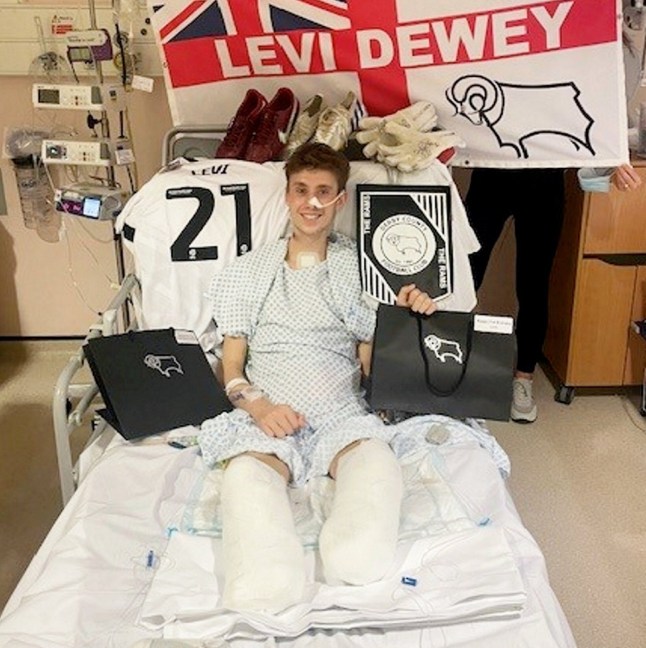
Doctors then told the distraught parents their son would need surgery to amputate both legs below the knee, in a desperate effort to save him.
Thankfully it was a success and Levi recovered from the infection, but while he woke up feeling lucky to be alive, the now 23-year-old says ‘nothing could prepare him’ for how much his life would change.
Levi, of Willington, Derbyshire, says: ‘I woke up and Christmas had passed, it was like my life was flipped upside down.
‘I was relying on my family to tell me what had happened, it was such a blur.
‘It was really difficult because I nearly died and I am so grateful to be here but I had to wrap my head around spending the rest of my life without my legs.’
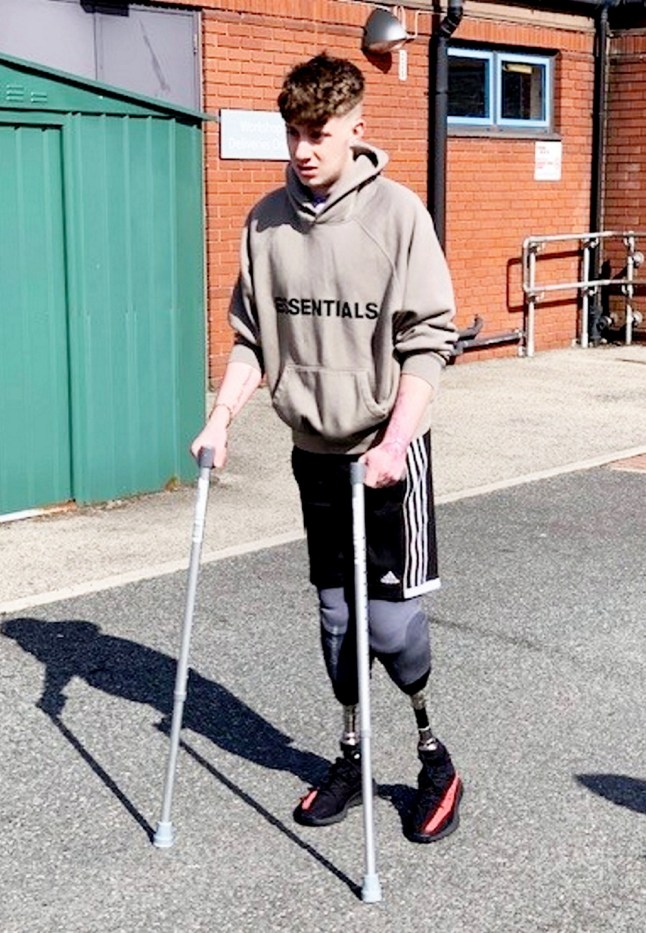
In the aftermath, Levi found it difficult to come to terms with his reduced mobility, saying his home ‘didn’t really feel like home’ because he now has to live in the front room.
He continues: ‘I couldn’t get changed by myself or even sit up and because I lost my feet I had to relearn how to drive again with my hands. It’s those things people can’t really understand.’
‘I am so lucky to have amazing support and I am so thankful that I am here, but getting sepsis has completely changed my life.’
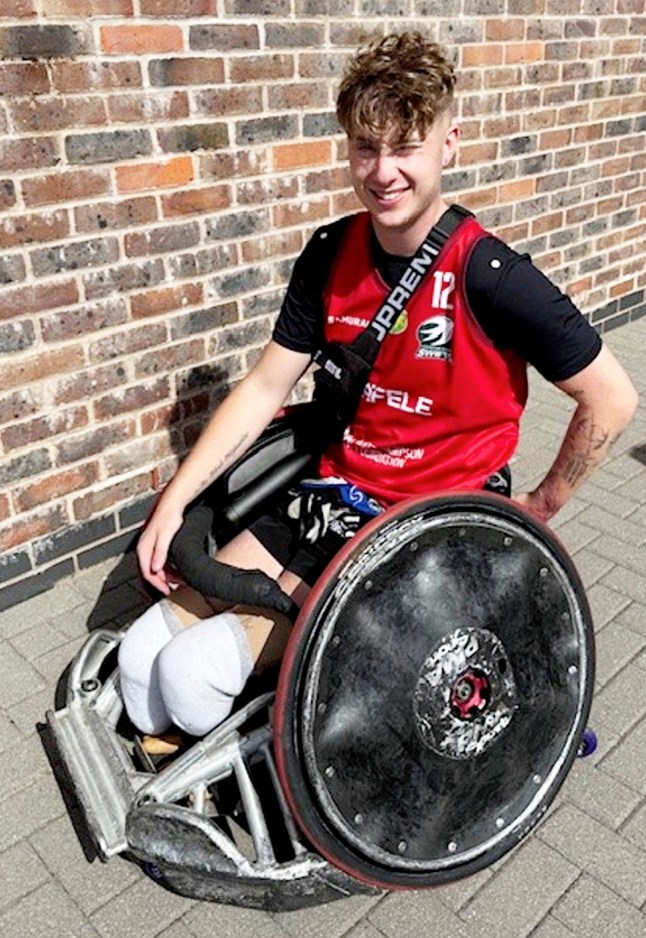
Lara and Neil said they had very little knowledge of what sepsis was, and they were shocked to find out it meant Levi’s organs were shutting down.
‘We had no idea how bad it could be,’ Lara says.
‘I thought it was something that only affected older people, or something you got from a cut, so when I saw him in the hospital bed and he was a mottled colour and his legs were blue, you could see where the sepsis had got hold of him. I’d never seen anything like it in my life.’
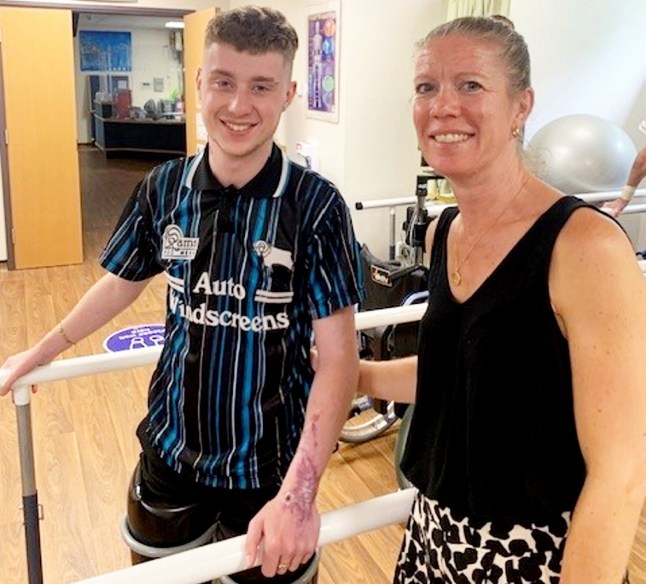
Neil adds: ‘What we have learned is that sepsis affects younger people differently to older people.
‘With older people, because their immune systems are more vulnerable you can see the symptoms more easily, but because Levi was fit and healthy, his immune system was masking his symptoms until it got to a point where his body could no longer cope and he deteriorated rapidly.
‘Please familiarise yourself with the symptoms so you know what to look out for.’
Signs and symptoms of sepsis
Sepsis is a life-threatening reaction to an infection which occurs when your body’s immune system overreacts to that infection and begins to damage your body’s own tissues and organs.
Symptoms include:
- Confusion
- Extreme shivering or severe muscle pain
- Severe breathlessness
- Not passing urine (in 18 hours or a whole day)
- Blue, grey, pale or blotchy skin, lips or tongue
- Dizziness
However, according to the NHS, there are a number of possible symptoms which can mimic conditions like flu or a chest infection, making it hard to spot.
It urges: ‘If you think you or someone you look after has symptoms of sepsis, call 999 or go to A&E. Trust your instincts.’
Dr Alina Paunescu, emergency medicine consultant and trust sepsis clinical lead at University Hospitals of Derby and Burton NHS Foundation Trust, explains that although sepsis affects people of all ages, very young children and elderly patients are more at risk after an infection due to a weakened immune system.
‘Sadly, Levi’s story is not unusual,’ she explains.
‘As sepsis is caused by a dysregulated response to infection, it is not rare for young patients to develop sepsis.
‘This may occur if they contract an aggressive virus or bacteria, they receive inappropriate antibiotics for what initially appears to be a minor infection, or have underlying conditions that compromise their immune system, so it is important to know what signs to look out for and when to seek medical help.’
6 Oct, 2025 | Admin | No Comments
Amazon’s Prime Big Deal Days are back for October – here’s what you need to know
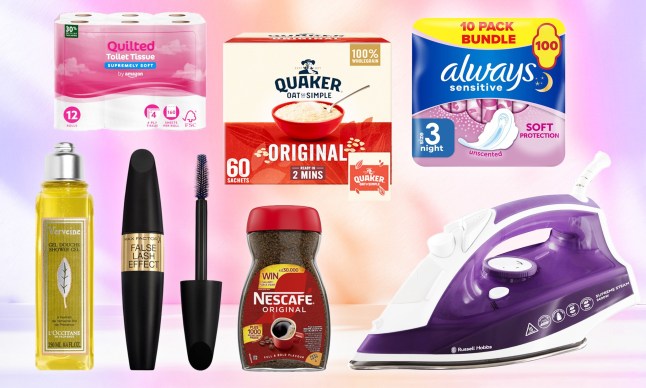
Metro journalists select and curate the products that feature on our site. If you make a purchase via links on this page we will earn commission – learn more
It’s been a hot minute since the last Amazon Prime sale, so if you’ve been wondering when the next one’s coming, you’re in luck!
The much-loved Prime Big Deal Days are officially back, landing on October 7 and 8, 2025.
This two-day event is exclusive to Prime members and means early access to hundreds of thousands of deals across everything from tech and toys to fashion and homeware.
This year’s sale is already shaping up to be a good one, with up to 40% off across a huge range of categories, from home and kitchen essentials to electronics, toys, fashion, and beauty and self-care. Yep, there really is something for everyone.
Always one to build anticipation, Amazon has already dropped a few hints about the big-name brands taking part – so expect to find big discounts on top names like Ninja, OURA, Dyson, Bosch and GHD.
It’s basically the perfect excuse to get ahead on your Christmas shopping or just grab something nice for yourself.
So if you’re a Prime member, mark 7 and 8 October in your calendar as these deals won’t be sticking around for long.
Not a Prime member yet? There’s plenty of time to sign up. In fact, do so now and you’ll get a 30-day free trial giving you full access to all the perks and carrying you right the way through the Prime Big Deal Days sale event! Just remember to cancel before those 30 days are up to avoid being charged.
How to get Amazon Prime for FREE – get Prime without paying for 30 days
Join Amazon Prime for a FREE 30-day trial now!
Unlock unlimited access to October’s Prime Big Deal Days, and enjoy a range of benefits, including free two-day shipping.
Cancel anytime within the 30-day trial without any fees, which will be £8.99 post trial.
Sign up here, you won’t regret it.
The Prime benefits don’t stop with the sale though. Sign up and you’ll be privy to a range of benefits including streaming award-winning movies and TV shows with Prime Video, enjoying ad-free music and top podcasts with Amazon Music and playing free games with Prime Gaming.
Prime members can also dive into a huge library of books and magazines with Prime Reading, store your photos securely with Amazon Photos and enjoy free delivery from your favourite restaurants and takeaways with Deliveroo Plus.
Phew! That’s a lot of perks.
In preparation for the October sales event, we recommend signing up for Prime in advance and, while you’re at it, setting up your Amazon wishlist is a smart move.
That way, you won’t be left scrolling under pressure during the two-day sale, and you’ll be ready to snap up your favourites the second they drop.
And of course, be sure to check back with us as we’ll be rounding up all the best deals once Prime Big Deal Days go live on 7 and 8 October. You won’t want to miss it.
Follow Metro across our social channels, on Facebook, Twitter and Instagram
Share your views in the comments below

Joe Wicks has launched his first-ever protein bar — but he really doesn’t want you to buy it.
The 40-year-old health guru, known as The Body Coach, became a national treasure after keeping the nation moving during lockdown. His easy teatime recipes have become go-tos for families across the country, and his adoring fans hang on his every word.
He seems like the perfect man to introduce a new protein bar; in fact, it’s a wonder he hasn’t done it before.
The thing is, Joe’s not a fan of the snacks, and in his new show, Licensed to Kill, we learn why.
The Channel 4 Documentary sees Joe create a product packed with chemicals linked to cancer, diabetes, strokes and — at the very least — diarrhoea.
Legally, Joe can make, promote, and sell a product he claims is so harmful, overconsumption could result in hospitalisation or even premature death — and he can still market it as a ‘health’ food.
It’s called Killer — a nod to the gym bros chasing ‘killer abs,’ and a not-so-subtle warning of the potential health consequences of eating ultra-processed foods (UPFs) in excess.
Now, before we go any further, it’s important to note that not all protein bars are dangerous, and not all UPFs are created equal.
Still, as I’m handed a Killer bar after meeting the notoriously friendly personal trainer at the documentary’s screening, I’m nervous.
What are Ultra-processed foods?
‘Ultra-processed foods, or UPFs, are foods that have undergone significant processing and modification from their original state,’ Dr Frankie Phillips, a registered dietitian with the British Dietetic Association, previously told Metro.
‘Some definitions suggest that UPFs usually contain ingredients that aren’t found in a typical kitchen e.g. artificial colours, preservatives, artificial flavours, and emulsifiers.
The review of studies in the British Medical Journal (BMJ) found that high consumption of UPFs is associated with a 50% increased risk of cardiovascular disease-related death, a 48-53% higher risk of mental health issues including anxiety, and a 12% greater risk of type 2 diabetes.
Higher UFP intake was also linked to obesity, a 21% greater risk of death (from any cause), 40-66% greater risk of heart-disease, sleep problems and a 22% more chance of depression.
Processing isn’t all bad
It’s important not to villainise processed foods completely.
As Dr Frankie explained: ‘Processing isn’t all bad, and sometimes it can even help as some nutrients are more easily available to the body when they are processed to some degree.
‘For example, canned tomatoes or tomato puree has more bioavailable antioxidants than a fresh tomato, and life is simply too busy to make everything from scratch all the time.’
I hold off unwrapping the ‘UK’s most dangerous health food’ until I’ve watched the first episode of the series. In it, Joe and Professor Chris van Tulleken develop their first collaboration — a chocolate orange protein bar with 96 ingredients, almost all of them chemical powders and synthetic sludge, apart from cocoa and marmalade.
‘Let’s not pussyfoot around — I want the maximum amount of each harmful ingredient while staying with the legal limit,’ says Joe as he pours additives and sweeteners into the gloopy mix.
They add maltitol, a type of sugar alcohol that doesn’t count as sugar on labelling, so companies can say their product has ‘no added sugar’ or is ‘low sugar’. But it can cause diarrhoea, which I’m not excited about.
There’s also aspartame, a sweetener that has been associated with a higher risk of stroke and cancer, according to the World Health Organisation. Plus maltodextrin, a sweet thickener that lab studies have linked to increases in intestinal inflammation.
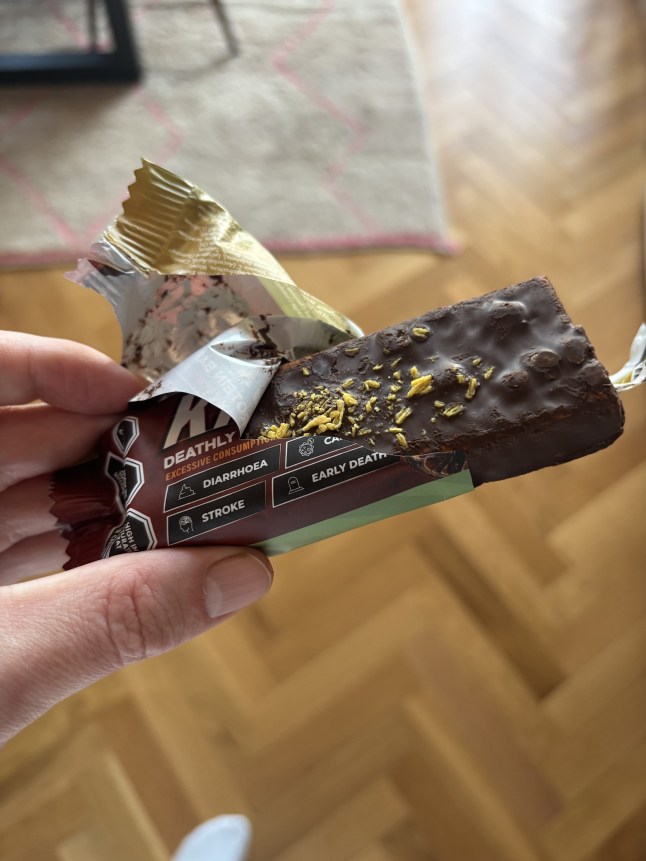
With slight trepidation, I take my first bite of Killer. I hate how delicious it is. Even though the texture is intensely chewy and slightly overwhelming, it tastes exactly like a chocolate orange — just a little richer — and, crucially, it’s marketed as much healthier.
Of course, I know it’s not — but many would happily eat one a day, thinking they’re supplementing breakfast or lunch with a nutritious alternative.
Personally, one bite is enough. I can easily demolish a Chocolate Orange in one sitting — two on Christmas Day — but a whole Killer bar would feel like eating an entire supermarket aisle of Easter eggs.
Maybe it’s because I’ve just seen how recklessly it was made, using gunk that could send me to an early grave, but the thought of taking another bite makes me feel sick.
Knowing the full extent of what I’ve just consumed makes me feel genuinely nervous. One bite won’t kill me, of course, but when added to the ultra-processed foods I may be unknowingly eating elsewhere, it certainly doesn’t fill me with confidence.
I’ve never been a ‘protein hound,’ but I have turned to protein shakes and bars on occasion. After watching Licensed to Kill, I won’t be doing that again.
Thankfully, there’s no danger that Killer will spark the next national health crisis — or at least worsen the one we’re already in. Joe is only selling a few thousand bars. He has no interest in becoming a health bar entrepreneur.
Still, Joe’s teaser for the documentary on Instagram, posted shortly after the screening, proves to be controversial. Commenters accuse the PT of vilifying foods, exaggerating the health risks of UPFs, and ignoring the financial barriers to fresh food that many families face.
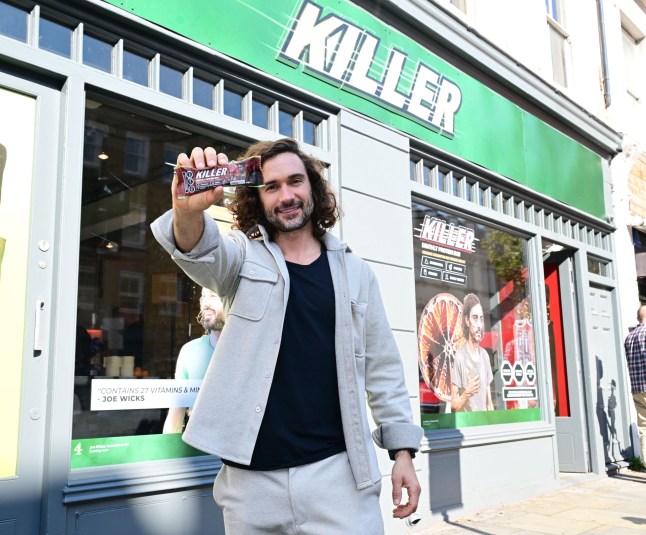
But the reality is, his bar is only slightly more concerning than some of the ones already lining supermarket shelves across the UK — and those are in high demand. Protein bars are a multibillion-pound industry. Some are made with natural ingredients, some are anything but. It’s currently really, really hard to tell them apart.
When Joe first laid out his plan to ‘poison the nation’ to make a point, I was dubious. But after watching him carefully carry out his provocative mission, I’m more convinced this could be the most important project of his life.
He’s not trying to tell anyone what to eat — but he is urging Parliament to ensure we’re properly informed about what we consume. In Chile, ultra-processed food comes with warning labels, similar to the ones we see on cigarette packets here in the UK. There’s no reason ultra-processed food shouldn’t be treated the same way here.
And as Joe added in an article for The Standard, financially-strapped, time-poor consumers also need more help. ‘The government and supermarkets need to put offers on real food, not just the crap they’re selling at the end of the aisles,’ he said.
Who could argue with that?
Perhaps Joe’s true legacy won’t be just keeping the nation fit during lockdown, but reducing cancer, strokes, diabetes, and premature deaths — all with a simple label on the foods quietly putting us in the ground.
The 96 ingredients in Joe's Killer bar
Professor Chris van Tulleken gave the Daily Mail the full ingredients rundown:
Chocolate protein dough: Protein blend (hydrolysed whey protein (hydrolysed whey protein isolate (milk), sunflower lecithin), hydrolysed collagen, caseinate calcium (milk)) (27%), maltitol syrup, polydextrose, oligofructose, water, fructo-oligosaccharides, hydrogenated palm kernel oil, maltodextrin, cocoa powder (2.2%), multivitamin complex (calcium carbonate, maltodextrin, magnesium oxide, vitamin C (ascorbic acid), citrus bioflavonoids (35% hesperidin), green tea extract (95% polyphenols), choline bitartrate, grape seed extract (95% polyphenols), lutein (marigold flower extract), iron (ferrous sulphate), lycopene (tomato extract), vitamin E (DL-alpha tocopherol acetate), anti-caking agent (silicon dioxide), inositol, quercetin, zinc oxide, niacin (nicotinamide), vitamin D3 preparation (maltodextrin, starch, sucrose, cholecalciferol), coenzyme Q10, pantothenic acid (calcium pantothenate), black pepper extract (95% piperine), vitamin A preparation (maltodextrin, dextrin, modified starch, vitamin A Acetate oil, dl-alpha tocopherol), lactobacillus acidophilus, vitamin K (Phylloquinone), vitamin B6 (pyridoxine HCl), thiamin, riboflavin, manganese sulphate, folic acid, chromium chloride, copper sulphate, selenium (sodium selenite), biotin, vitamin B12 (carboxymethyl cellulose), glycerol, potassium chloride, multivitamin complex (calcium citrate malate granular, buffered magnesium citrate, vitamin C (ascorbic acid), ferrous (iron II) bisglycinate chelate, zinc citrate dihydrate, natural vitamin E (D-alpha tocopheryl acetate), vitamin B3 (nicotinamide), L-selenomethionine, vitamin A acetate (retinol), vitamin B5 (calcium pantothenate), vitamin K2 menaquinone-7 (MK7), manganese sulphate, beta carotene, copper sulphate anhydrous, vitamin B12 (methylcobalamin), vitamin B6 (‘P5P’ pyridoxal-5-phosphate monohydrate), vitamin D2 ergocalciferol, vitamin B2 (riboflavin), vitamin B1 (thiamine HCL), chromium picolinate, vitamin B9 (L-5-MTHF), potassium iodide, sodium molybdate, vitamin B7 (Biotin)), flax seed oil, sweetener: xylitol. Preservative: sodium benzoate, carboxymethyl cellulose, emulsifier: xanthan gum, sunflower lecithin. Sweetener: aspartame, sucralose.
Orange spread: Sugar-free caramel (polydextrose (dietary fibres), sweetener: maltitol syrup, sweetened condensed milk, vegetable fat, stabiliser: glycerol, cocoa butter, emulsifier: sunflower lecithin, salt, stabiliser: pectin, colour: plain caramel (natural flavour), white chocolate coating (sugar, palm oil (palm oil, fully hydrogenated palm oil), whey powder (milk), emulsifier (soya, flavouring], colour: annatto [E160b(ii), maltodextrin], orange oil (1%).
Dark chocolate flavour coating: Dark chocolate (sugar, palm oil, fat-reduced cocoa powder (14%), emulsifier: soya lecithin, polyglycerol polyricinoleate).
Soy crispies: Soya protein isolate, tapioca starch, salt.
Orange crunchies: Orange, sucrose, maize starch (0.3%).
5 Oct, 2025 | Admin | No Comments
'I hid my sexual fantasy from my wife for 10 years – now she's disgusted by me'
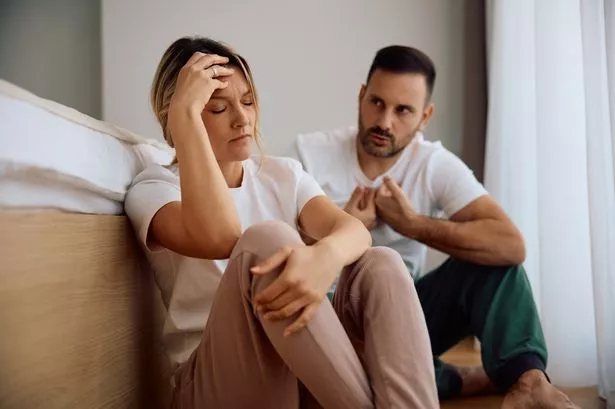
A man has revealed his secret sexual fantasy left his wife in tears after he admitted he had been hiding it for a decade but could no longer resist the temptation
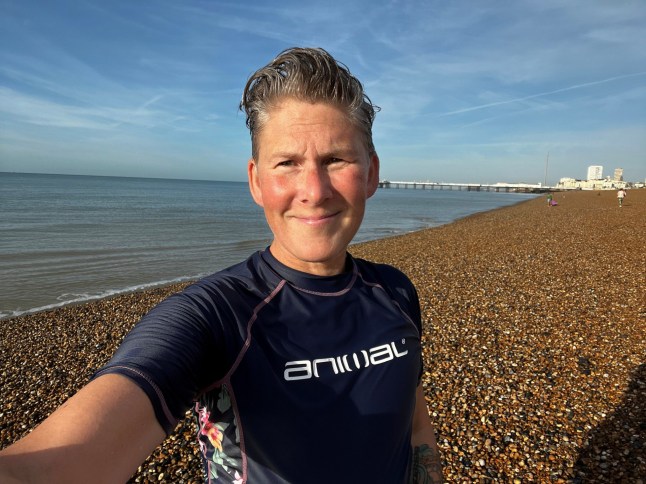
For most women, losing their breasts through cancer can be a hugely traumatic experience, both physically and emotionally.
But I’m not most women. I identify as trans non-binary, sitting comfortably between genders.
This was brought into sharp focus in 2021, when I was diagnosed with early-stage breast cancer, aged 50.
Of course, my diagnosis was scary. But I have hated my breasts for my entire life. So alongside the trauma of a cancer diagnosis, for me, it was also an opportunity to get the chest I’d always wanted.
I’m aware that’s a shocking thing to say, and for many, a shocking thing to hear.
For all my adult life, there was nothing more terrifying and upsetting than women’s cancer screenings because I never felt like a woman.
While I have enormous respect for our wonderful NHS, providing life-saving cancer screening, I have always hated looking at or touching my breasts and was terrified of going for smears.
Breast Cancer Awareness Month
Breast Cancer Awareness Month falls every October designed to raise awareness of the disease and fundraise for research into its cure.
You can read more stories about breast cancer below:

Join Metro's LGBTQ+ community on WhatsApp
With thousands of members from all over the world, our vibrant LGBTQ+ WhatsApp channel is a hub for all the latest news and important issues that face the LGBTQ+ community.
Simply click on this link, select ‘Join Chat’ and you’re in! Don’t forget to turn on notifications!
It wasn’t until I was in my mid-forties that I had the language to describe how I identify and suddenly, life made sense.
Still, medical professionals don’t always know how to deal with people who don’t fit the gender binary.
Days before I hit my half century, my first ‘you’ve turned 50, here’s your breast cancer screening invite’ arrived.
In attending the appointment, I knew I’d be surrounded by – what I viewed as – ‘proper women’, drawing my difference into even starker contrast. However, as my mum had gone through breast cancer 15 years before – and I’ve already been on my own 10-year journey with blood cancer – I knew I had to dig deep and go.
I did. The appointment was over in minutes; utterly procedural, come in, take your shirt off, stand there. In the aftermath came a second letter.
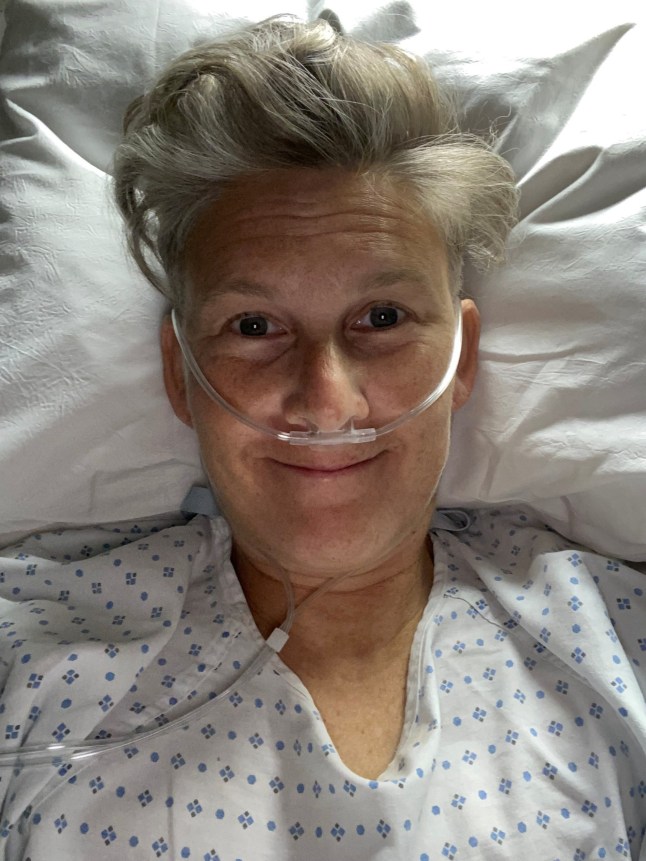
They’d found something. Apparently, I had a 25% chance of it being the Big C, so I needed a follow-up appointment, and went back in.
Two weeks and 12 biopsies later, I sat in the breast clinic. I stared silently at the posters on the walls, various depictions of women, not one of them looked like, or I felt, represented me.
I thought being surrounded by others, all equally as anxious about what lay ahead would be unifying, but I felt so utterly out of place and very alone.
Sure enough, I was told I had cancer. It felt – and still feels – so very jarring and unaligned to who I am to ever be discussing ‘breasts’.
As the words sank in, I couldn’t help but feel like I was to blame. My thought process was that my long-held hatred for my boobs brought this upon myself because I’d always wanted them gone.
The doctor went on to say it was very treatable, telling me how lucky I was, and that he’d book me in for a lumpectomy (surgery to remove cancer and conserve the breast), or a single mastectomy (complete removal) and reconstruction, followed by radiotherapy.

Breast cancer symptoms
The first symptom of breast cancer that most women notice is a lump or an area of thickened tissue in their breast.
You should see a GP if you notice any of the following:
- a new lump or area of thickened tissue in either breast that was not there before
- a change in the size or shape of one or both breasts
- a discharge of fluid from either of your nipples
- a lump or swelling in either of your armpits
- a change in the look or feel of your skin, such as puckering or dimpling, a rash or redness
- a rash (like eczema), crusting, scaly or itchy skin or redness on or around your nipple
- a change in the appearance of your nipple, such as becoming sunken into your breast
The relief was huge. I wasn’t going to die.
But, where did that leave my gender-affirming journey? I asked if a double mastectomy was an option, given that they were happy to take my cancer breast away and build me a new one, but he said, ‘there was no need to remove a healthy breast’.
I tried to explain how I identified and where I was on my gender journey, that cancer had thrown a massive spanner in my gender affirming care plans as top surgery may gets more complicated post radiotherapy cancer treatment, but the answer remained ‘no’.
For me, the only course of action was to have both my breasts removed. This was a chance to get the flat chest I’d always dreamt of.

After several more disappointing appointments with surgeons, I finally found a private breast and oncoplastic specialist who was empathetic, listened to my story and understood that all cancer patients are unique.
Treatment is not a one size fits all and after taking my case to a multi-disciplinary board to gain approval, my amazing surgeon confirmed he’d do a double mastectomy.
Six weeks later, he removed the cancer, both my breasts, my nipples, and reconstructed the skin around the pectoral muscles. After six hours of surgery, I was wheeled back into my room, where my beautiful wife Emma was waiting.
I remember her gently pulling the sheet down and opening the gown so I could see my completely flat chest. The relief and joy were overwhelming.
The importance of screenings
Cancer screening can help spot cancers at an early stage, when treatment is more likely to be successful. For advice on attending screening as a trans or non-binary binary person, visit Cancer Research UK’s website here.
Screening is for people without symptoms. If you notice anything that is not normal for you, contact your GP. In most cases it won’t be cancer, but if it is, spotting it early can make a real difference
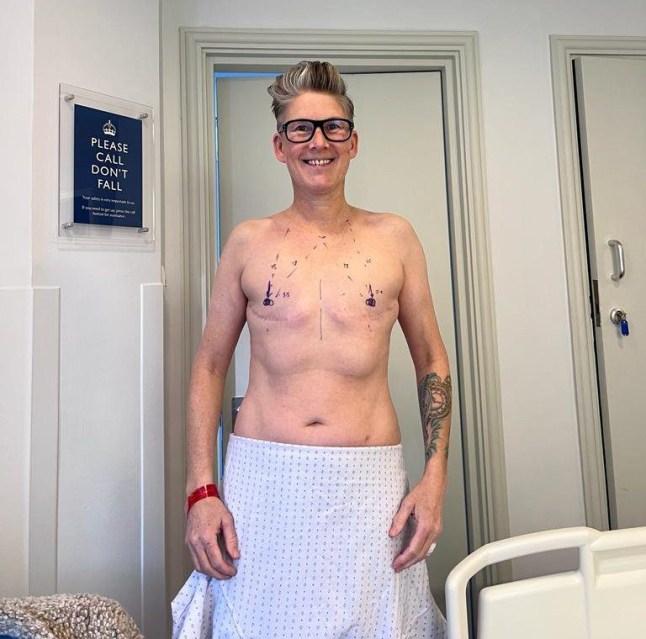
Amid the tears and fear of cancer, it was the amazing silver lining.
Post-surgery, I attended a cancer support group, hoping to meet someone who may relate to my experience. But as I shared my story, I felt like such a fraud, guilty for feeling so positive about what cancer had given me.
Certain cancers – like the blood cancer I live with and keep under control with daily chemo tablets – feel non-gendered. I have regular check-ups and every time the waiting room is filled with a variety of people, so I never feel out of place – we all bleed red.
But what about those cancers that are typically associated with one gender? We need more consideration as to how they might affect someone who doesn’t identify with their sex assigned at birth.
This has to improve. But I urge everyone, no matter how you feel about your body (parts) – please don’t ignore them.

Female cancers can affect you, even if you don’t identify as female.
From the horridness of cancer, I’ve been fortunate to be able to take something positive – to finally choose the body shape that is right for me. But what if there are more people like me within our beautiful trans and non-binary community?
Can’t we be doing more to be kinder and more inclusive? To ensure everyone is seen for who they are and how they identify?
Whatever health services people need to access, they should be able to do so with the care, respect, and dignity they deserve.
Do you have a story you’d like to share? Get in touch by emailing James.Besanvalle@metro.co.uk.
Share your views in the comments below.
5 Oct, 2025 | Admin | No Comments
Gen Z is turning to the stars to guide their dating lives and this is why

As many people are turning to their horoscopes to predict their love life, Tinder have watched the passion for astrology play out on the popular dating app – and an expert weighs in on why
5 Oct, 2025 | Admin | No Comments
‘Skinny girl summer’ is over — but society is still fatphobic, even in autumn
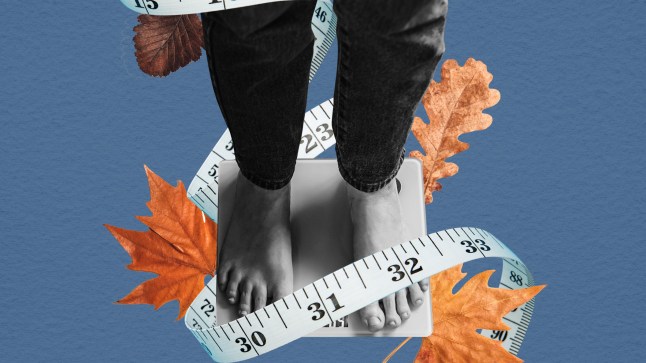

Leaves that slowly turn orange. Sunshine mornings with a chill in the air. Swapping out the summer wardrobe for cosy jumpers.
With autumn well underway in the UK, I can finally breathe a sigh of relief because, while I enjoy soaking up the vitamin D, summer is always complicated for me.
I’ve always leaned slightly more towards ‘mid-size’. Having my arms on show makes me feel vulnerable. I’ve had friends ask me if I’m too hot when I’ve deliberately kept a denim jacket on in 20-degree heat, which I’ve brushed off with a generic: ‘I didn’t check the weather forecast before I left the house today.’
Of course, it’s not just me. In 2024, the US Forbes Health survey found that more than half (51%) of Gen Zs feel pressured to either ‘get fit’ or ‘lose weight’ before going on holiday. And one 2025 UK study found that 22% of people reach the height of their discomfort showing their legs either at the beach or the swimming pool.
And this year, there’s been even more reason for me to crave the cool air that this season brings.

This year of the ‘skinny girl summer’
There’s no doubt about it, summer 2025 was, depressingly, ‘skinny girl summer.’
The likes of Ozempic, Wegovy and Mounjaro stopped being the reserve of A-listers, and firmly entered into the mainstream. A study from Kantar found that between March 2024 and August 2025, usage of GLP-1 drugs almost doubled, increasing from 2.3% to 4.1% of the population. Weight loss is now the main reason cited for taking it, superseding management of type 2 diabetes.
As families prepped to jet off for their summer holidays, there was advice on getting pens through customs, and how to bend the drug’s no-alcohol rule.

And, when I flicked my television on in the light evenings, I’d notice adverts for GLP-1 medications, forcing their way into the comfort of my living room. In July, the Advertising Standards Authority even banned an ‘irresponsible’ advert from M&S featuring a model with ‘large pointed shoes’ that emphasised ‘the slenderness of her legs.’
And in August, Serena Williams, one of the greatest tennis players of all time, revealed that she’d lost just over 14kg after using GLP-1 jabs. In an interview with Vogue, she said: ‘My whole life is being in the gym, working out, running, training, HIIT training, dancing… I would always get to a certain point on the scale, but I could never get below that.’
‘Your body isn’t seasonal – there’s no deadline for feeling at home in it’
Alex Light, a body image speaker and the author of You Are Not A Before Picture, has spent much of her life struggling with what she’s seen in the mirror. As a teen, she was dieting, constantly ‘chasing an ideal that kept changing.’ And in her 20s, she developed an eating disorder that ‘dominated’ the entire decade.
Alex has cultivated a ‘fairly steady’ relationship with her own body image through recovery – but she can’t help but feel concerned by the ‘pressure to be thin,’ which, in her view, ‘feels louder and heavier than ever.’
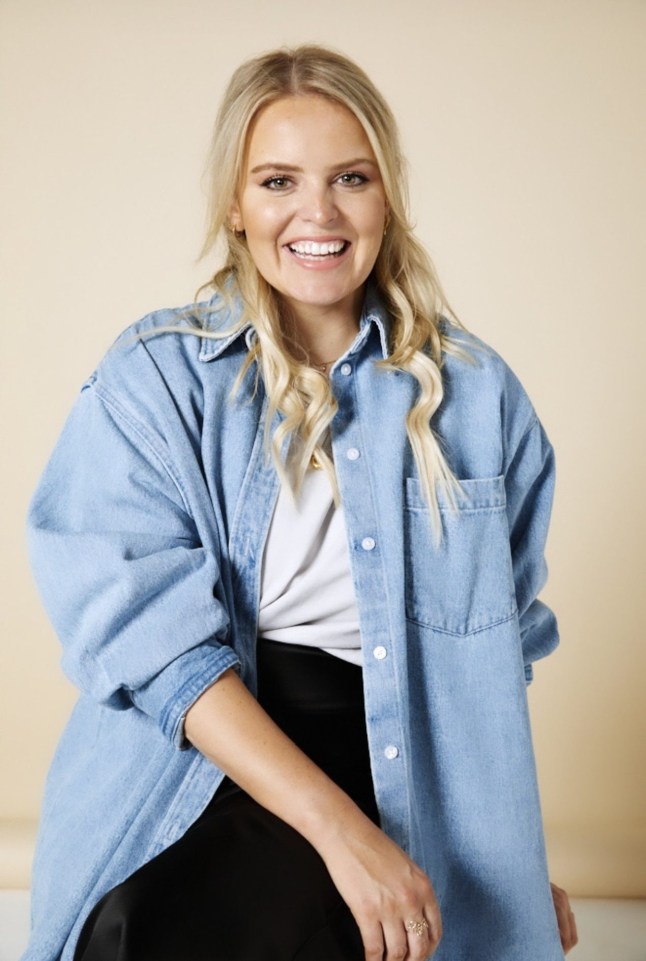
‘We’ve reverted back to the same old message that has hurt us for an extraordinarily long time: shrink yourself to be worthy of the beach, of attention, of being seen. The discourse has left a lot of people feeling like they’re back at square one with their body image, and I’ve felt that frustration too,’ 37-year-old Alex, who lives in London, shares.
Reflecting on the change of the seasons, Alex recognises that for some, the end of summer can feel like a ‘relief’ as that ‘intense spotlight’ dims a little.
‘It can also stir up guilt if you spent the season feeling like you “hid” or didn’t live fully. Try to remember that your body isn’t seasonal and there’s no deadline for feeling at home in it,’ she shares, offering up advice for anyone who might be struggling as the leaves turn brown.
‘It can be a good time to shift the focus away from how your body looks and towards how you want to feel in it: maybe comfortable or strong, rested, nourished. Body confidence isn’t about loving every inch of yourself all the time; it’s about loosening the grip that shame and comparison have over your life.’
How does body image change with the seasons? It’s complicated
Dr Helena Lewis-Smith is a health psychology researcher at the University of the West of England, specialising in body image. She highlights that people who already face discrimination, including based on their bodies, are likely to experience ‘compounding pressures.’
‘Societal messaging that equates thinness with success or desirability can intensify scrutiny and stigma, reinforcing existing inequalities and potentially increasing discrimination already faced by marginalised groups,’ she says.
Elsewhere, she reminds us that autumn isn’t a quick fix for a more body positive mindset: in a few months, the diet industry will be feeding – and profiting – off people’s insecurities in January.
‘Generally, we know that from April and May people begin to feel anxious and that’s when they’ll start pursuing these weight loss behaviours. The fact that you’re outside seeing people, you’re more likely to engage in body comparisons, more so than say in the autumn and the winter when you’re staying in and drinking your red wine, sat on the sofa. This is when people really start to engage in weight loss strategies,’ she notes.
'Black women are literally killing themselves to fit beauty standards'
As Philomena Kwao previously wrote for Metro, the body image struggles can intensify for many Black women:
‘How we view our bodies is much more complex than how western media portrays it. Beauty standards are set by cultural boundaries and traditions, something advertisers consistently fail to understand.
‘Growing up as a black woman, I never wanted to be skinny. The ‘heroin-chic’ look of the late ’90s to early ’00s was never an ideal body in my eyes, nor a point of discussion to anyone around me.
‘Growing up in an age before social media, my beauty standards were defined by the images and media in my surroundings, which at the time was predominantly African American.
‘In my world, we rarely saw the thin white woman.
‘We saw the video vixen in music videos – she was our beauty standard. Her pert round bottom, her defined skinny waist and her ample bosom. An exaggerated hourglass.
‘We all wanted to be like her, and to a certain extent, we all still do.
‘Growing up as a black girl, if you didn’t have a small waist or a big bum, you were considered ugly.’
‘People might be feeling slightly less pressure from now onwards, but then come January, it continues again. From the research, we know that people tend to start pursuing weight loss strategies again, come the New Year.’
As Dr Helena shares, one of the biggest mechanisms for people experiencing body image concerns, no matter what the weather’s doing outside, is the comparison spiral.
‘People compare themselves with their friends, on social media, with influencers, and that is one of the main reasons why people feel dissatisfied with their bodies because they don’t match up to what they’re seeing,’ she explains.
‘We live in a fatphobic society that doesn’t value people who live in larger bodies. But there are people who are not living in larger bodies who are taking these drugs.’
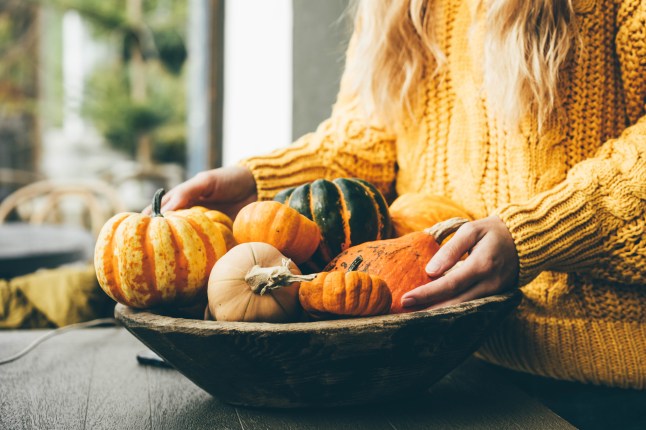
So, what’s the answer? From a health psychology perspective, Dr Helena believes that there should be a greater emphasis on helping people, rather than shaming them into weight loss.
This might include teaching strategies, behaviours and thoughts to empower people to do things like ‘practise intuitive eating’ or ‘eat food that’s going to fuel them.’
There’s one caveat, though: this type of psychological support typically isn’t offered alongside GLP-1 drugs, which Dr Helena says is a ‘very narrow approach to weight loss.’
‘We conflate weight with health, and we shouldn’t be doing that, as health is so much more. The irony is, if you encourage people to have better body image, that person will probably end up losing weight, but they’ll do it in a healthy way,’ she concludes.
So, while there needs to be room for plenty of nuance, perhaps the only way for us to really feel confident in our bodies is to completely dismantle the systems that fuel fatphobia and misogyny altogether. And that’s quite the radical task, no matter the season.
Do you have a story to share?
Get in touch by emailing MetroLifestyleTeam@Metro.co.uk.
5 Oct, 2025 | Admin | No Comments
Five mundane words during a doctor’s appointment changed my life forever


In March 2023, Moira Jordan was in her wedding era. The bride-to-be had sent out the save the dates, booked the village hall, and said ‘yes’ to the dress.
When she wasn’t planning her nuptials to groom, Sam, 33, she was a busy geography teacher in South London, gearing up to get her students through exam season.
But Moira, now 32, was just four months away from her big day, when her life changed.
She received a diagnosis of triple positive breast cancer, and embarked on a gruelling health journey.
She tells Metro: ‘It was the hardest thing I’ve ever had to go through, without a doubt.
‘It was a very sad time, but I’m trying to have gratitude — both for the excellent care I received and for the amazing friends and family I was surrounded by.’

Prior to her diagnosis, Moira was fit and healthy, but says that she was ‘breast aware’ due to a family history of cancer.
She explains: ‘My mum, Marian, was diagnosed with ovarian cancer in 2015, and a year later it was confirmed that I have the BRCA gene mutation.’
Everyone has BRCA1 and BRCA2 genes, but if the gene has changed in some way, it can increase the risk of certain types of cancers developing.
BRCA1 and BRCA2 gene variants can cause a much higher risk of breast and ovarian cancer.
Moira says: ‘I was only 24 when I found out, and the guidance is generally that the risk increases once you’re in your 30s.
‘I thought I could wait to go through any treatment until after I’d had a family.’
But, as Moira says, ‘the cancer caught up with me sooner than expected’.
‘I’m not sure when I first felt a thickening in my breast,’ she continues. ‘I think I thought it was just how my breast was, which seems so stupid now.
‘Eventually I went to the doctor, and two weeks later, I was in hospital for a scan and a biopsy.’

While the doctors didn’t diagnose Moira there and then, she said there was a five-word tell-tell sign from the doctor.
Moira explains: ‘She said to me, “we’ll see you next week.’ And I just remember thinking, if everything was fine, they’d write to me or call. But clearly, they’d seen something and wanted to talk to me about it. It was then that I knew things were going to change.’
Moira’s suspicions were confirmed, when she was asked to return to hospital the following week.
‘I went alone,’ she says. ‘I went in with the nurse, and the doctor started speaking and he just said: “This is cancer”
‘My response was: “No, it’s not.” We actually went back and forth for a minute or two, with him confirming it was cancer, and me insisting that it wasn’t.
‘I just couldn’t get my head around it. It was a blur after that.’
In the weeks and months that followed, Moira embarked on a gruelling treatment plan.
After fertility treatment, she had eight rounds of intense chemotherapy, a double mastectomy and reconstruction, and 15 rounds of radiotherapy. The following year, she underwent a further 14 rounds of chemotherapy.
‘I tried to be positive,’ she says, ‘but it was a very, very low time. Most people my age were travelling, making memories, and starting their own families, while I was going through this.
‘I had to stop working, and the fatigue was terrible. As time passed, I just felt worse and worse.
‘Chemotherapy was particularly dark. I was so scared about catching coughs and colds that I just shut myself off.’
Moira and Sam were also forced to cancel their wedding. She says: ‘I called round friends and family, and obviously I had to explain what was going on.’

Thankfully, Moira’s treatment was a success, and after finishing radiotherapy, she began taking tablets to block oestrogen, as the hormone can make the cancer return. She’ll likely be on medication for the next five to 10 years.
And, after two years of constant hospital visits, Moira began rebuilding her physical and mental strength, attending physiotherapy at Guy’s Hospital, London, where she began running.
‘At that point I never believed I’d be capable of doing any kind of intensive exercise again. Spending so much time in hospitals meant I became quite reliant on others and totally lost both my independence and confidence. This was my chance to rebuild everything I lost.’
And finally, in October 2024, Moira and Sam were able to walk up the aisle.
She says: ‘We did it all pretty last minute. We only sent the invites out eight weeks before.
‘I really wanted it to be a day where I didn’t feel sad, so I tried to keep the cancer out of it. It was a wonderful day.’
Now, Moira is preparing to run the Royal Parks Half Marathon alongside 16,000 people on Sunday October 12 in support of CoppaFeel – the UK’s only youth-focused breast cancer charity – as part of her mission to raise awareness and empower more young people to be aware of changes in their body.

She’s particularly passionate about making breast cancer education a standard part of school life, ensuring that every young person leaves the education system knowing how to check their body, recognise what’s normal, and seek help if something changes.
Looking ahead to race-day, Moira said: ‘This race will mark just over two years since my surgery. It’s the latest in a series of opportunities I never thought I’d have.’
When asked what advice she would give to someone going through something similar, Moira said: ‘Try and make small daily goals and simply focus on getting by at first. Don’t think about what you can’t do, but about what you can do.’
Now, reflecting on her goals for race-day and beyond, Moira says: ‘I simply want to raise awareness on the importance of young people regularly checking on their own health and wellbeing.
‘Having been diagnosed at a young age myself, this mission feels more important to me than ever.’
To donate to CoppaFeel! visit Moira’s fundraising page, go to: Moira’s fundraising page.
Do you have a story to share?
Get in touch by emailing MetroLifestyleTeam@Metro.co.uk.
5 Oct, 2025 | Admin | No Comments
It’s spider season – catch and release critters with this £10 ‘amazingly effective’ spider catcher
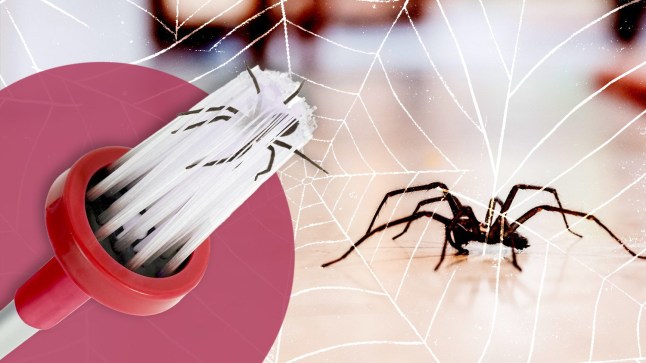
Metro journalists select and curate the products that feature on our site. If you make a purchase via links on this page we will earn commission – learn more
As autumn creeps in, spiders start seeking shelter indoors and for many of us, that means more unexpected and unwanted eight-legged visitors popping up around the house.
If you long to get rid of the critters but the thought of squashing or getting up close to them makes you shudder, you’re definitely not alone.
The cooler weather sends all kinds of bugs scuttling inside in search of warmth and while some of us might be fine with a quick shoe-swat, others want a more humane, less “final” solution.
One contraption that does just that and is racking up plenty of five star reviews from Amazon customers is the Keplin Foldable Spider Catcher.
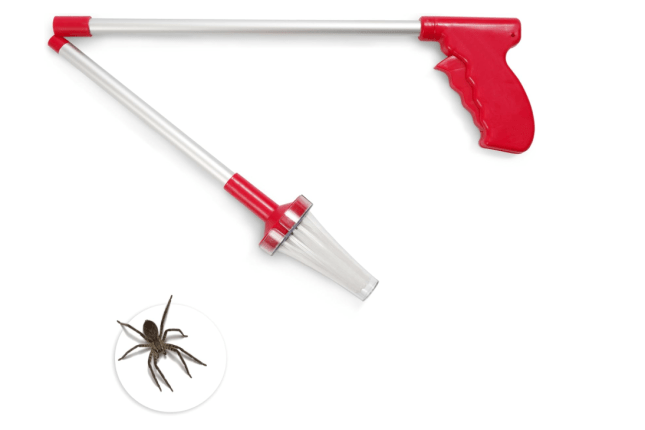
Keplin Foldable Spider Catcher, Bug Trap Catcher Extra Long with Handle
If you hate spiders in your home, this foldable spider catcher is the gadget to buy. Featuring a foldable arm that extends from 45cm-81cm and firm bristles that open and close with a squeeze of its lever, it humanely and quickly catches spiders and other critters ready to relocate them elsewhere without squashing them.
This innovative tool allows you to quickly remove spiders and other bugs without squashing them.
With a foldable arm that extends from 45cm to 81cm, it lets you keep a safe distance from creepy crawlies while easily catching and relocating your unwanted guests.
Simply open up the extending arm and secure in place, then squeeze on the lever to open the bristles. Pop the bristles over the spider and release the handle to securely catch your little house guest before relocating it outside.
It’s lightweight, easy to use, and really effective.
But, it’s not just us who love it – shoppers are raving about how well the Keplin Foldable Spider Catcher works in real life.
One review left by an anonymous Amazon customer said: ‘Brilliant!! Reaches up into the corners of rooms with no trouble and traps the spiders with the push of a button! They don’t escape until you release them. Fantastic gadget!’
A review left by a shopper named Jo reads: ‘This little gadget is great for the bugs, wasps, and things you really don’t want in your home but don’t want to touch. It works really well and doesn’t harm them, just holds them securely so you can release them safely outside!’
And a review from another anonymous shopper said: ‘Ordered this after having a bad arachnophobia flare up and it’s helped my anxiety so much. Just used it for the first time and the whole thing was easily dealt with within minutes with no issues. The price is defo worth it. I highly recommend it!’
Don’t let scuttling spiders make themselves at home this autumn. Grab a Keplin Spider Catcher and show them the door – quickly and humanely.
Follow Metro across our social channels, on Facebook, Twitter and Instagram
Share your views in the comments below
